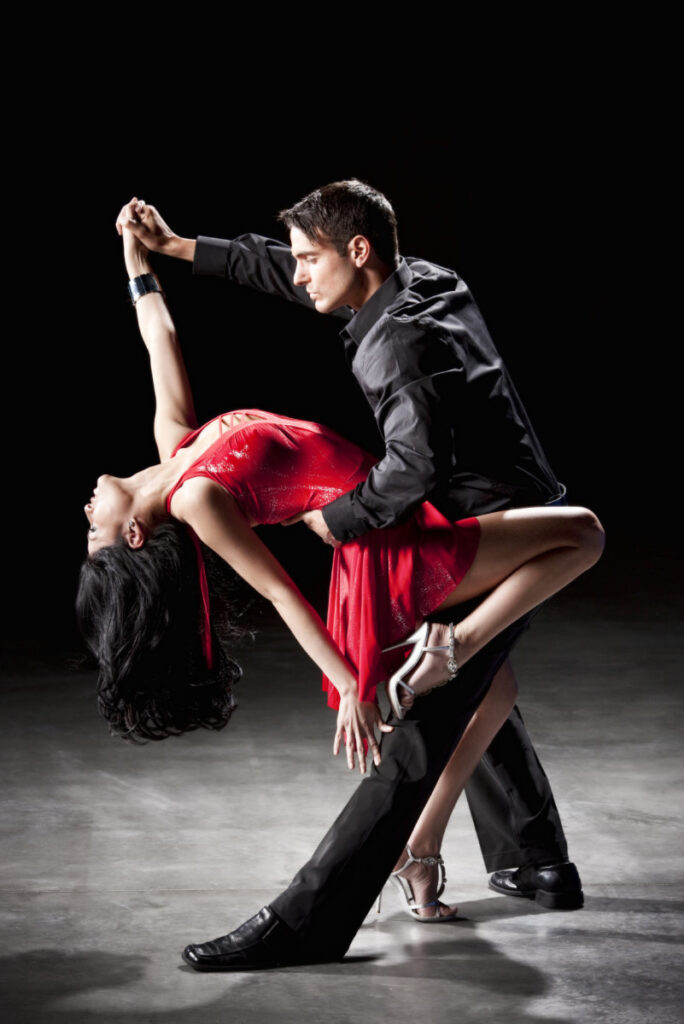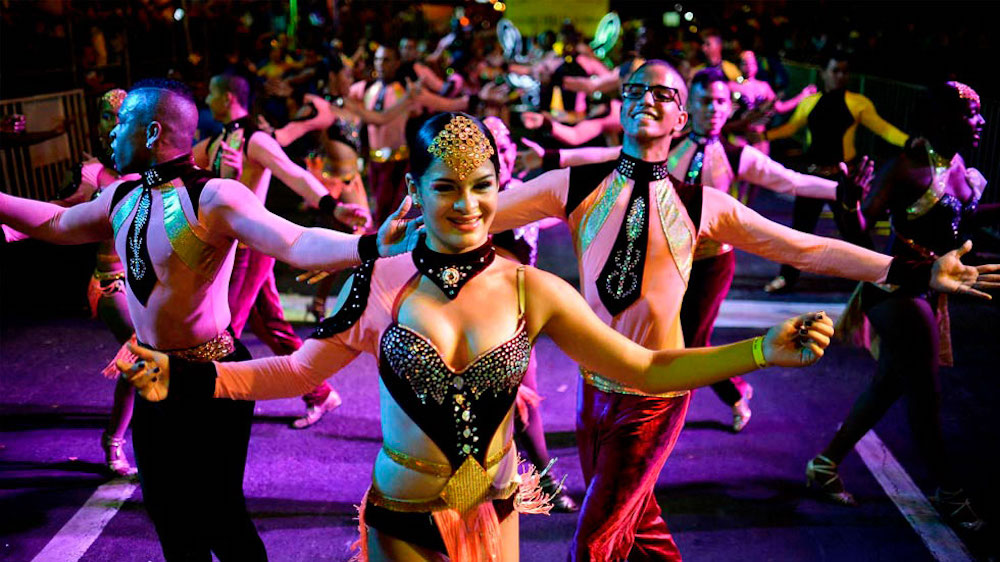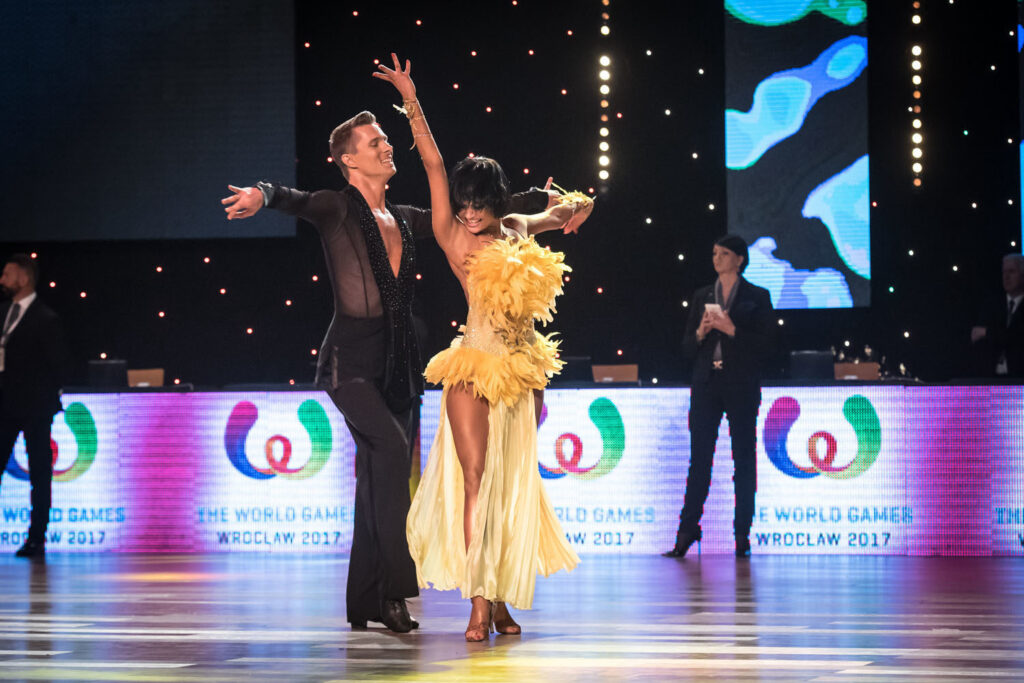
11 Jan Which is the easiest Latin dance style to learn in 2023?
Of course, that’s a trick question, no dance form is easy *but* with work and dedication you can enjoy an amazing hobby. Latin dancing has been a part of societies around the world for centuries. From traditional folkloric dances to modern choreography showcased in nightclubs, the Latin style is an incredibly versatile and exciting form of dance that continues to have a lasting impact on cultures throughout the globe. Whether you’re interested in learning about different forms of Latin dance or eager to improve your moves, there are plenty of options available in 2023.

Salsa is one of the most popular Latin dances, with its simple footwork and energetic rhythm. Learning Salsa is relatively easy for both newcomers and experienced dancers alike; with its adaptability to any musical style or occasion, it’s no wonder why so many people are drawn to this dance form. In addition, various DVDs and online tutorials offer instruction from some of the best teachers in their field. For those who learn best by watching others, attending workshops and classes can be beneficial as well.
Cuban Salsa, or Casino as it is also known, is a popular and exciting Latin dance that originated in Cuba during the 1950s. The main distinction between Cuban Salsa and other forms of salsa danced around the world such as Salsa Linea is its rhythmic complexity. While other styles may have simpler rhythms, Cuban Salsa requires dancers to be able to take on a more complex pattern of steps and timing to carry out the movements correctly.
The dance incorporates the same basic figures and patterns that feature in Salsa Linea (the most widely practiced form of salsa globally) but with one key element — improvisation. While this might sound daunting for some, it’s actually one of the most enjoyable elements of dancing Cuban Salsa; you can experiment with different combinations and adapt your choreography at any time.

The musicality of Cuban Salsa is also unique; it involves constantly shifting from one rhythm to another throughout sections of the song which essentially demands a constant change between two-partner moves and solo steps within each introduction.
This means that, unlike many other dances where couples maintain their formation throughout each song/routine, dancers will pause and break away from each other’s embrace several times in order to draw attention to themselves individually before re-joining again shortly after.
Cuban Salsa has inspired countless generations across the globe since its inception in the 50s, captivating thousands of people who appreciate its energy, graceful sensuality, and passionate intensity.
Various films have even been made based on its influence including The Mambo Kings (1992) which defined Cuban music worldwide through its iconic soundtrack featuring renowned musicians like Celia Cruz, Tito Puente, and Cachao – just to name a few! As long as there are those willing to continue learning about this fantastic dance style then it will stay alive for many years to come!

Colombian salsa, or cumbia, is a vibrant and entertaining dance style that originated in Colombia. It brings together elements of mambo, rumba, and African rhythms to create a unique and captivating fusion of modern Latin American music and dance. Cumbia has been popularized by many different artists throughout the years, including Carlos Vives, Shakira, Marc Anthony, Selena Quintanilla-Perez, and more.
The dance style itself emphasizes frequent turns and movements of the hips, arms, and legs. The steps of traditional Colombian cumbia involve taking one step forward followed by two steps backward. From there it can be mixed up with other regional salsa variations such as Cuban son or Venezuelan joropo. There are also some regional styles that have developed over time including Panama’s chiricano style and Cali’s fandango.
In recent years, cumbia music has become increasingly popular around the world thanks to its catchy beats and uplifting lyrics. Many people enjoy dancing cumbia for its fast pace and upbeat nature which make it perfect for parties or social gatherings. Musically speaking, cumbia combines European instruments like the accordion with African percussion instruments such as the conga drums to create a unique sound that is often associated with Caribbean music scenes such as Jamaica or Haiti.
During live performances, you can often see dancers energetically shaking maracas or clapping their hands while singing along with the lyrics at full volume! Other than being used for dance clubs it can also be heard during carnivals in South America where people from all backgrounds come together to celebrate life through music and movement.
No matter how you approach it – whether you choose to take lessons or just watch videos on YouTube – there’s no denying that Colombian salsa (cumbia) is an electrifying form of expression that will surely get your feet moving!

The Cha-Cha-Cha is another fun dance option: its signature hip-swiveling movements make it incredibly enjoyable to watch and even more enjoyable to practice. This Afro-Cuban classic is often characterized by quick feet, fast turns, and sharp technique—all technical elements that can be difficult for beginners but rewarding once mastered.
Video tutorials are available online if you want to learn at home while YouTube channels also feature some amazing cha-cha-cha teachers offering virtual classes as well.
If folk dances are more your thing, then consider giving Merengue a try—it’s an upbeat two-step partner dance that originated in the Dominican Republic before spreading around the world. Its energy and playful rhythm have made it a fan favorite for over two centuries now; adding some footwork flair makes merengue even more captivating when done properly! Learning merengue does require proper guidance though; finding a good teacher or enrolling in classes at local studios will get you going quickly!

Lastly, if Latin dancing isn’t quite your thing but you still want to explore movement from other cultures, then take a look into Bollywood! Originating from India, its influences stem from classical Indian music and themes found in ancient Hindu literature which gives it an undeniably distinct flavor compared to other western forms of dance such as ballet or jazz (although these too share similarities).
Learning Bollywood consists mainly of mastering intense facial expressions along with intricate hand movements married together with dramatic steps—it’s an absolute must try even if just for fun!
Overall, whatever style of Latin dancing you choose there’s no denying how much joy they bring when performed properly. Why not give them each a try? With varying levels of difficulty between them all, there’ll always be something new to discover no matter what skill level—so take advantage of what 2023 has in store and enjoy every moment!



No Comments